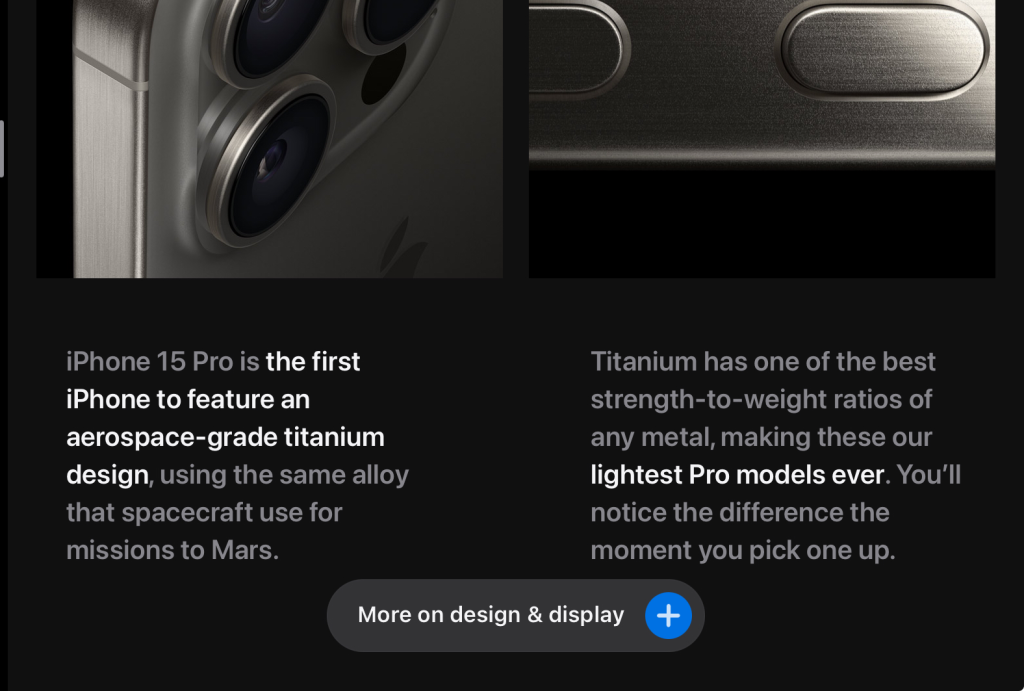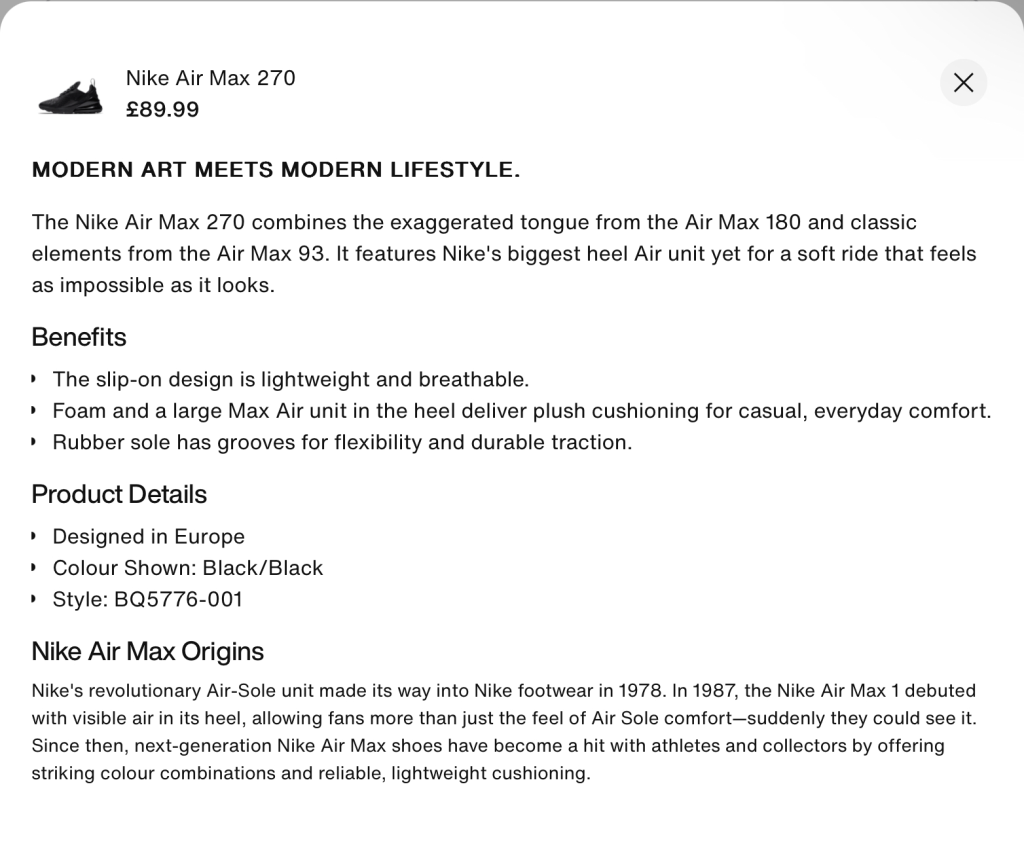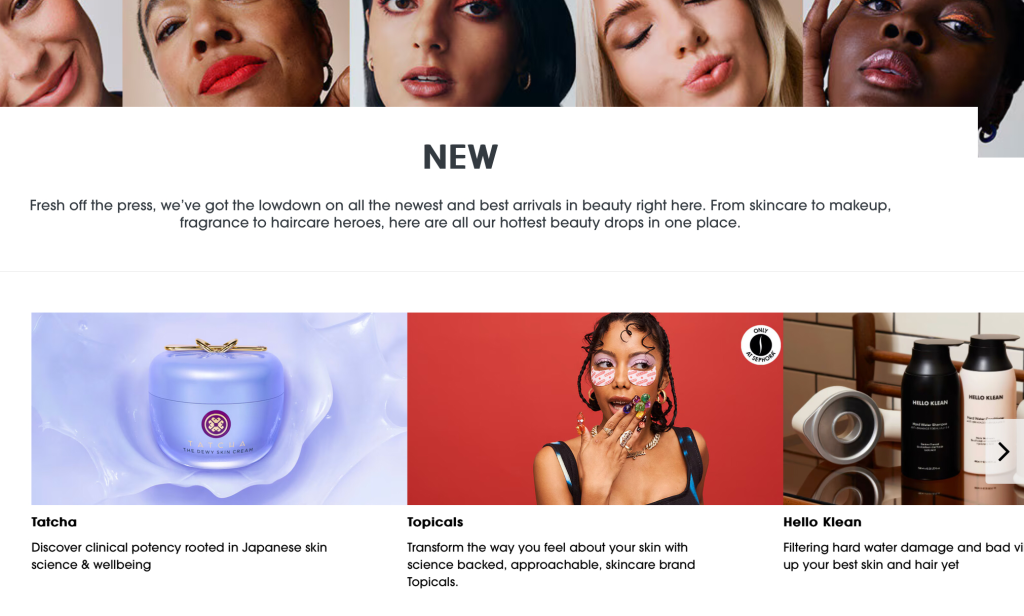
Product descriptions are often overlooked, but they can play a crucial role in driving sales and enhancing customer engagement.
A well-written description can effectively communicate the product’s features, benefits, and value proposition, enticing potential customers to make a purchase. Here are some essential tips for crafting engaging product descriptions, plus examples how famous brands craft theirs:
1. Keep it Concise and Easy to Read
Aim for a product description that is no more than 200 words. Use clear and concise language that is easy to understand for a wide audience. Avoid jargon and technical terms that may alienate potential customers – that type of information should be in the manufacturer’s product spec or brochure.
2. Highlight the Benefits, Not Just the Features
Focus on the ways the product can improve the customer’s life or solve their problems. Describe how the product will make them feel, look, or perform better. This is how advertising works, it sells lifestyles, not things.
3. Use Strong Verbs and Storytelling
Engage your audience by using powerful verbs and vivid descriptions. Tell a story that highlights the product’s impact on people’s lives.
4. Include High-Quality Images
Visuals are powerful tools that can enhance engagement and convey information effectively. Use high-resolution images that showcase the product from multiple angles. Most mobile cameras take decent photographs, and editing tools can work wonders – no excuses.
5. Use Strategic Keywords
Incorporate relevant keywords throughout the description to improve search engine optimisation(SEO), this will increase the visibility of your products in search results delivered by search engines like Google. For help with keywords, check out this article we wrote about cracking the keyword code – which types work, and how to get the right keyword strings for your content.
6. Optimise for Mobile Devices
Ensure that your product descriptions are optimised for mobile devices; a significant portion of online shopping now takes place on smartphones and tablets.
7. Tailor Your Descriptions to Your Audience
This sounds simple, but understanding your target audience’s interests and preferences can be overlooked or underestimated. Tailor your descriptions to resonate with their specific needs and desires where possible.
Examples of How Big Brands Craft Their Product Descriptions
Here are some examples of how large brands successfully craft engaging product descriptions inline with their brand’s image:
Apple
Apple’s product descriptions are known for their simplicity, clarity, and focus on the user experience. They often use strong verbs and imagery to convey the product’s benefits and value proposition.

Apple’s description for the new iPhone 15 screams buy me I’m cool, I’m made from the same stuff as a spaceship! It’s sleek and stylish, as always.
Nike
Nike’s product descriptions are motivational and inspire users to achieve their fitness (or fashion) goals. They use language that is both inspirational and action-oriented.
This example is an extended product description, like Amazon uses where the product description expands into a longer text. This extra detail helps with search rankings.

The product is for a teen’s trainer, based on the original Air Max, designed back when I was born (according to the ‘Origins’ section at the bottom – a nice touch). Today, the Air Max is as much of a fashion piece as it was when I was growing up, basketball stars helped make them cool.
Nike are Always reinventing
The new edition has to be better for it to be desirable and an improvement on previous designs. The result reads:
‘Nike’s biggest Air heel unit yet, for a soft ride that feels as impossible as it looks.’
The benefits focus on ‘everyday comfort’ rather than sports, probably due to the demographics being unlikely basketball players…
Amazon
Amazon’s product descriptions are often written by a combination of humans and technology. The company uses machine learning to analyse customer reviews and identify common themes, which are then incorporated into the product descriptions. Vendors are also encouraged to write lengthy descriptions. No doubt this aids in SEO. Search for an Amazon product and see what you think.
Sephora
Sephora’s product descriptions are detailed and informative, providing customers with comprehensive information about the product’s ingredients, benefits, and how to use it.
Saphora product descriptions make everything sound fun, hip, and very modern, tapping into the wellness part of health and beauty. Their products are priced towards professionals who care about what they put on their skin.

The page highlights their ‘newest and best arrivals.’ The three bottom product descriptions mention Japanese science, transforming the way you feel, and repairing damaged hair and skin caused by hard water. The result: ‘The best skin and hair yet.’
Final Thoughts
Overall, crafting engaging product descriptions is an important part of any successful e-commerce strategy. By following these tips and learning from the examples of big brands, you can create product descriptions that will capture attention, drive sales, and get your customers excited about owning it.
If you need product descriptions and other website content creating, get in touch. And don’t forget to visit our shop, it’s packed full of engaging articles and posts to help fuel SEO and drive traffic to your store. We cover everything from camping to real estate.